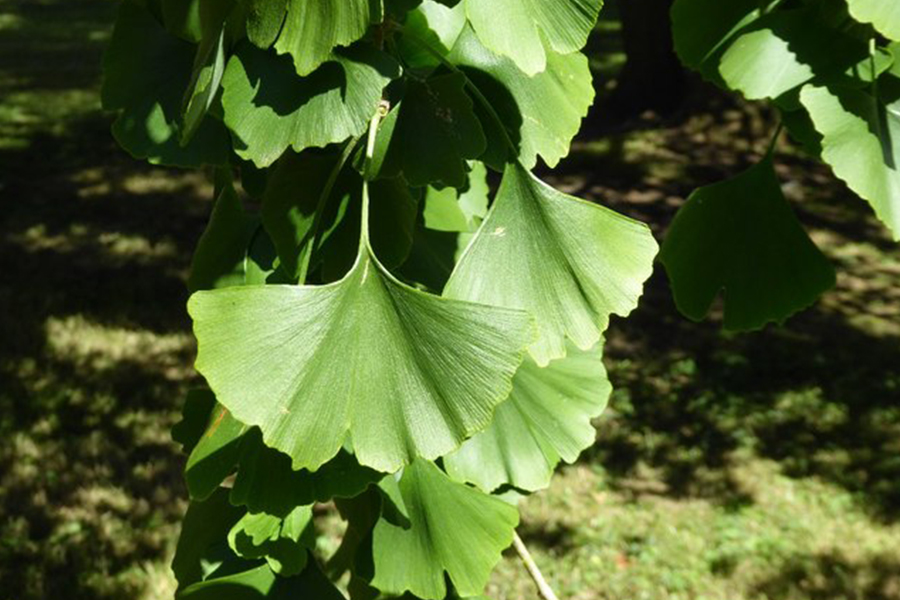Ginkgo biloba
The Ginkgo, a “living fossil,” has been around since the lower Jurassic period and is the last surviving species in the order Ginkgoales.
Location
Though Hadwen’s original Ginkgo tree has been lost over the years, a replacement was planted in 2021 and can be found just off the Larch Lane trail, near the Stonewall Cutoff Trail entrance.


History at Hadwen
In 1900, the Ginkgo tree was among many of the deciduous trees growing on Hadwen’s farm. By 1971, a preliminary report on trees in the arboretum doesn’t record a Gingko on the property, indicating that the tree he planted had died prior to this point. It is suspected that, combined with a general lack of care over the arboretum, many of the trees were lost during severe weather events such as hurricane Donna in 1960.
Keep Learning
Detailed Species Information
Ginkgo, also known as the maidenhair tree, is a deciduous tree and the last living species in the order Ginkgoales native to China. The genus Ginkgo has been around for 290 million years and although it is endangered in the wild, the ginkgo tree has been widely cultivated throughout human history. These large trees typically reach a height of 66–115 feet (20–35 meters) but can grow much taller. The Ginkgo is a remarkably long-lived species with some specimens reportedly living over 2500 years. This ability to live for extended periods is likely due to ginkgo’s resistance to diseases and insects as well as the ability to form aerial roots. The distinct leaves of the Ginkgo are green and fan-shaped with veins radiating out from the stem. In the fall the leaves turn bright yellow and fall from the tree within two weeks.
The Ginkgo was long thought to be extinct in the wild but it was discovered that wild ginkgo still grows in the Zhejiang province in eastern China in deciduous forests with acidic, well-drained, and fine-textured soils. The majority of Ginkgos growing today are cultivated and Ginkgos are prized for landscaping and street trees due to their unique appearance and their tolerance to urban conditions. Most cultivated ginkgos are male. Female specimens produce fruits containing butyric acid which has a foul smell. Male ginkgo trees however do produce large amounts of pollen.
